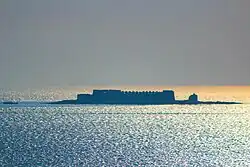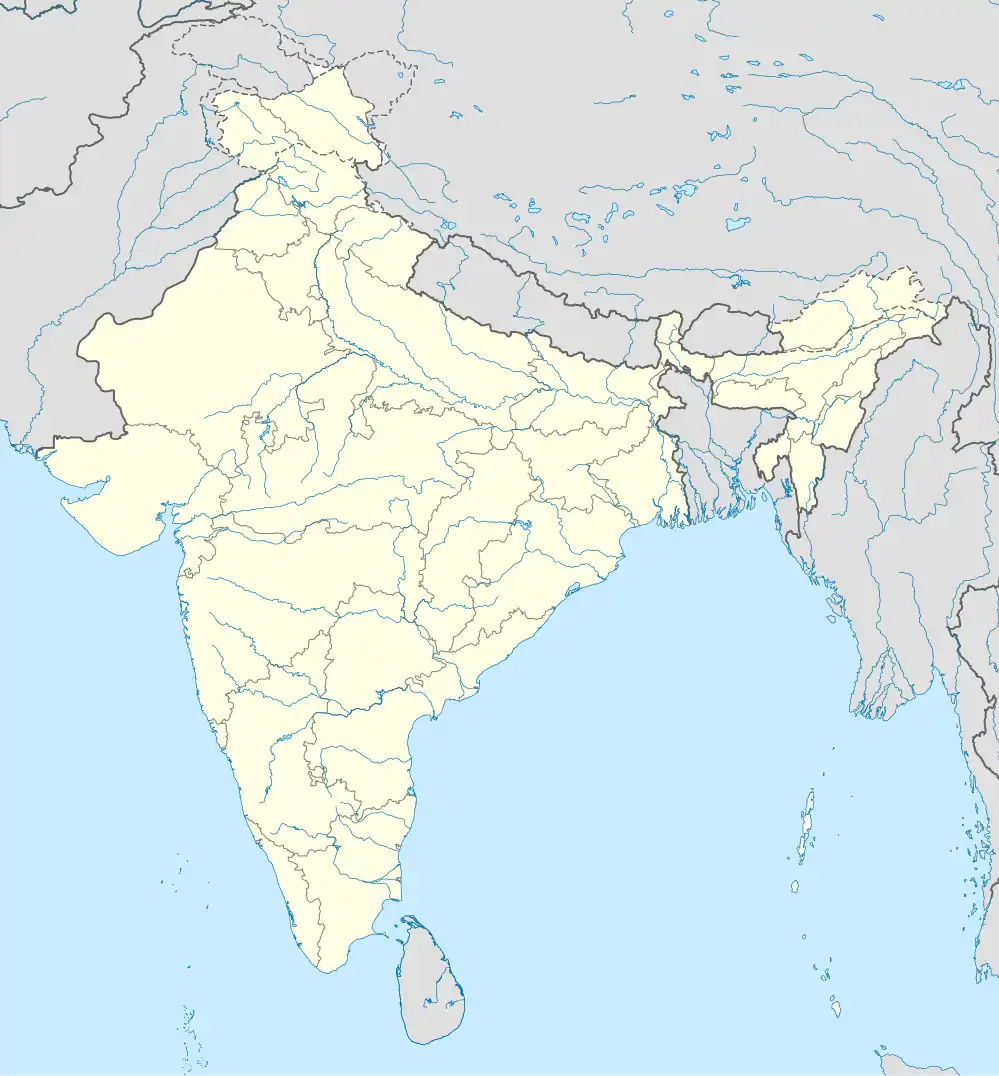Padmadurg
| Padmadurg | |
|---|---|
| Part of Raigad Fort | |
| Raigad, Maharastra, India | |
 | |
| Site information | |
| Type | Fort |
| Owner | Government of India |
| Controlled by | |
| Open to the public | Yes |
| Condition | Ruins |
| Location | |
 Padmadurg | |
| Coordinates | 18°19′19.71″N 72°55′57.53″E / 18.3221417°N 72.9326472°E |
| Site history | |
| Built | 1676 |
| Built by | Chhatrapati Shivaji Maharaj |
| Materials | Sandstone and lime mortar |
Padmadurg, also known as Kasa fort, is one of five historical sea forts built by Chhatrapati Shivaji Maharaj and located in Raigad District Maharashtra, India. It was built by the Shivaji Maharaj to keep look over Janjira fort, as it was attempted many times by the Portuguese and other invaders from Janjira, which was controlled by the Siddis. It also served as a key shipbuilding yard during Shivaji's reign. Now partly in ruins, Padmadurg remains accessible via special permission and is protected under the Archaeological Survey of India, with ongoing efforts to conserve its unique maritime heritage.
History
Padmadurg was one of the sea forts built by Chhatrapati Shivaji Maharaj in 1676 in order to control the naval activities in the Arabian sea. It is located in the northwest direction of the Janjira fort at a distance of about 4 km.[1] Padmadurg, along with Underi fort, was re-captured by the Marathas (under Raghuji Angre) from the Siddis of Janjira in 1759.[2][3]
During cleanup activities in 2012, ASI authorities found around 250 cannonballs of historical value.[4] The sea fort of Padmadurg is not as big as Janjira but still the fort can be visited and enjoyed. Visiting the fort requires taking permission from the Customs/Navy. The fort was not only a part of Sindhudurg's defenses but was also Chhatrapati Shivaji Maharaj's main ship construction yard. This fort can also be viewed from Janjira.[5]
Architecture
The Padmadurg Fort was built of sandstone and lime mortar atop a 20 ft deep rock island, the fort spans roughly 9 acres and comprises six rounded bastions.[6] It is structured with three defensive zones: an outer retaining wall, a detached "padkot," and the inner citadel, each designed to withstand waves and enemy assault.[7][8] Inside, the fort contains dry water tanks, ammunition storage, temple ruins (e.g., Kandeshwari), bunker-like barracks, and numerous cannon placements over 200 cannonballs and 46-47 rusted cannons were discovered during preliminary surveys and the number later went upto 250.[9][10]
References
- ^ Madaan, Neha (8 May 2011). "Padmadurg in shambles for want of money". The Times of India, Pune. Retrieved 23 July 2015.
- ^ "Maratha Period- Kolaba district". Maharashtra Cultural gov. Directorate Of Printing And Stationery Maharashtra State, Bombay. Retrieved 24 January 2023.
- ^ "Murud-Janjira & Padmadurg Fort: Keepers of the Konkan coast". The Economic Times. Retrieved 24 January 2023.
- ^ "Over 250 old cannon balls were discovered by archaeological officials at Padmadurg Fort near Murud, Raigad district. Further research and investigation is on in this regard". The Times of India. 11 November 2012. ISSN 0971-8257. Retrieved 16 July 2025.
- ^ "Murud-Janjira & Padmadurg Fort: Keepers of the Konkan coast". The Economic Times. 26 December 2019. ISSN 0013-0389. Retrieved 16 July 2025.
- ^ Ravi (5 January 2019). "Padmadurg Fort - Kansa Fort". Forts of Maharashtra. Retrieved 16 July 2025.
- ^ UNESCO Centre du patrimoine mondial. "Serial Nomination of Maratha Military Architecture in Maharashtra - UNESCO World Heritage Centre". whc.unesco.org (in French). Archived from the original on 5 June 2021. Retrieved 16 July 2025.
- ^ "Padmadurg". AlibagOnline - Market Place. Retrieved 16 July 2025.
- ^ Sahyadri, Destination (23 January 2024). "Ilika Explorer: Trip to Padmadurg, Samrajgad and Revdanda". Ilika Explorer. Retrieved 16 July 2025.
- ^ "Cannon goes missing from Padmadurga fort in Raigad district". The Indian Express. 16 December 2015. Retrieved 16 July 2025.